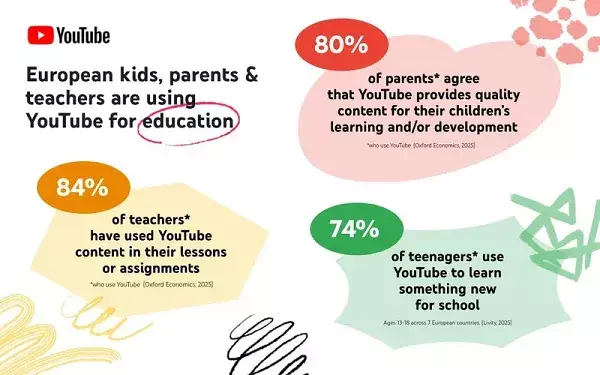In a digital age where content consumption often conjures images of endless entertainment, YouTube is challenging that narrative by emphasizing its potent educational potential. Recent data reveals a significant portion of youth, from various European countries, turns to YouTube not just for diversion but for genuine learning. With over 70% of teens utilizing the platform for academic purposes, this shift underscores an evolving perception: YouTube is becoming an essential instrument for education, resonating strongly with learners, teachers, and parents alike. Its vast repository of tutorials, explanatory videos, and interactive content bridges gaps that formal schooling sometimes cannot fill, creating a democratized space for knowledge dissemination.
This pivot raises essential questions: Can platforms branded primarily as entertainment hubs genuinely serve as credible educational resources? The evidence suggests they can—and in fact, often do so remarkably well. YouTube’s vast, user-generated ecosystem allows for flexibility, personal learning paces, and content tailored to diverse learning styles. The platform’s ability to adapt its identity from just entertainment to an educational ally could be a game-changer, not only for its reputation but also for its resilience against impending regulation.
The Regulatory Tug-of-War: Education vs. Restriction
Despite its compelling role as an educational tool, YouTube faces increasing scrutiny from regulators across the globe. Several nations—including France, Greece, Australia, and Spain—are contemplating restrictions that limit online social interactions for teenagers, primarily to protect them from potential harms. Although these measures aim to safeguard youth, they risk undermining the platform’s educational potential if restrictions are applied without nuanced consideration.
Australia’s recent policy shift exemplifies this dilemma. Initially, YouTube was to be exempted from strict age restrictions due to its predominantly educational value. However, the government later reclassified it within broader social media caps, setting the stage for potential limitations on under-16 users. Such moves threaten to sideline an invaluable learning resource and stifle the organic role YouTube plays in youth education.
The platform’s challenge lies in demonstrating that its benefits—fostering curiosity, supplementing classroom learning, and empowering self-directed education—outweigh the risks regulators perceive. This isn’t merely a PR exercise; it is a strategic necessity. If YouTube hopes to maintain its educational vitality amid tightening restrictions, it must present concrete evidence of its positive impact, possibly through endorsements from educators, researchers, and policymakers.
Could Highlighting Educational Destiny Seal Its Fate?
YouTube’s ongoing efforts to showcase its educational significance highlight a broader narrative about the platform’s evolving societal role. By partnering with studies like Oxford Economics and academic institutions, YouTube is attempting to legitimize its use as an educational medium. If it can position itself as more than just a convenience—rather, as a cultural and educational resource—then perhaps policymakers will reconsider harsh restrictions.
However, this is a double-edged sword. The platform’s infrastructure, riddled with inconsistencies, misinformation, and entertainment-driven content, complicates its case. It must therefore develop robust content moderation, promote high-quality educational videos, and create formal pathways for educational engagement. Doing so could shift the discourse from viewing YouTube as a risky social media platform to recognizing it as an innovative learning environment worth protecting.
Ultimately, the fight for YouTube’s educational future hinges not only on regulatory debates but also on societal acknowledgment of digital learning’s legitimacy. If the platform can effectively demonstrate the transformative power of its educational content, it might carve out a safe space amidst the regulatory landscape. Whether that’s enough to outweigh its reputation as an entertainment hub remains to be seen, but one thing is clear: the future of learning might be a lot more YouTube-centric than many realize.


Leave a Reply